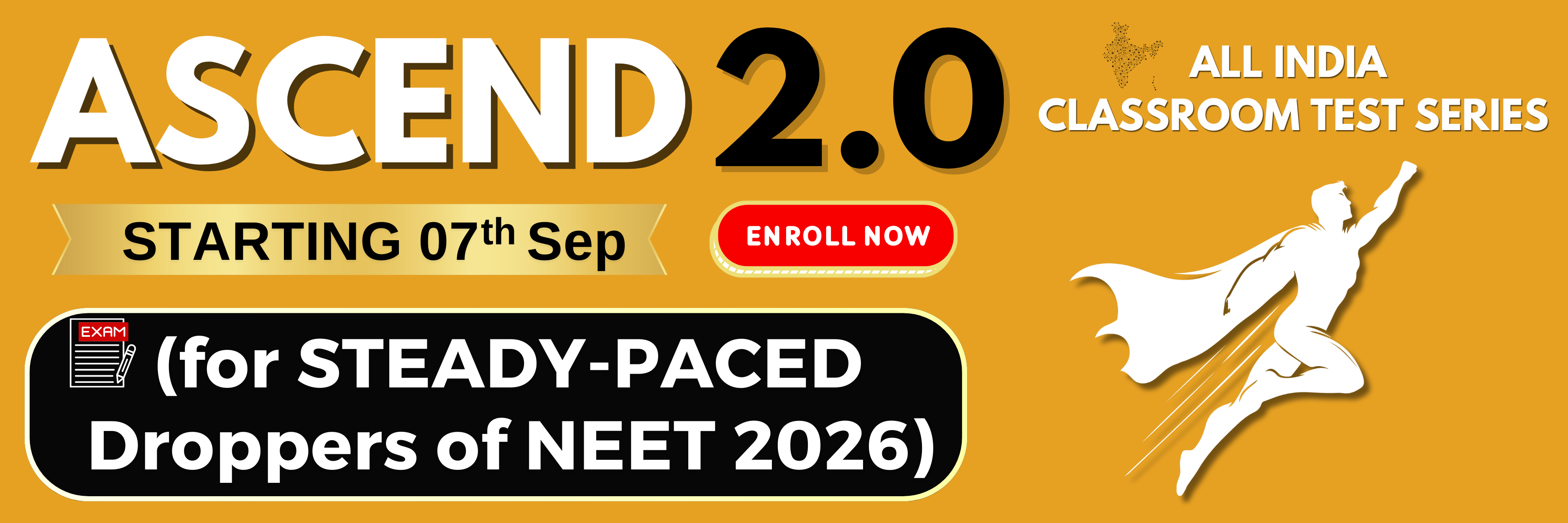A ball \((A)\) is projected vertically upward, a second ball \((B)\) is projected horizontally with the same initial speed as the first. The relative velocity of ball \(A\) with respect to \(B\):
1.
is constant in magnitude only.
2.
is constant in direction.
3.
is constant in magnitude and direction.
4.
varies, both, in magnitude and direction.

To unlock all the explanations of this course, you need to be enrolled.

To unlock all the explanations of this course, you need to be enrolled.
| 1. | zero |
| 2. | constant |
| 3. | proportional to time |
| 4. | proportional to displacement |

To unlock all the explanations of this course, you need to be enrolled.

To unlock all the explanations of this course, you need to be enrolled.

| 1. | \(\sqrt{\dfrac{2h}{g}}(\sin\theta+\cos\theta) \) |
| 2. | \(\sqrt{\dfrac{2h}{g}}(\sin^2\theta+\cos^2\theta) \) |
| 3. | \(\sqrt{\dfrac{2h}{g}}\left(\dfrac1{\sin\theta}+\dfrac1{\cos\theta}\right) \) |
| 4. | \(\sqrt{\dfrac{2h}{g}}\left(\dfrac1{\sin^2\theta\cdot \cos^2\theta}\right) \) |

To unlock all the explanations of this course, you need to be enrolled.

To unlock all the explanations of this course, you need to be enrolled.
| 1. | is less than \(H\) |
| 2. | is greater than \(H\) |
| 3. | is equal to \(H\) |
| 4. | cannot be related with \(H\) |

To unlock all the explanations of this course, you need to be enrolled.

To unlock all the explanations of this course, you need to be enrolled.
where the units are in SI. The acceleration of the balloon is:
1. zero
2. \(10~\text{ms}^{-2}\) to right
3. \(5~\text{ms}^{-2}\) to right
4. \(10~\text{ms}^{-2}\) upward

To unlock all the explanations of this course, you need to be enrolled.

To unlock all the explanations of this course, you need to be enrolled.

| 1. | \(10~\text{m}\) | 2. | \(15~\text{m}\) |
| 3. | \(20~\text{m}\) | 4. | \(25~\text{m}\) |

To unlock all the explanations of this course, you need to be enrolled.

To unlock all the explanations of this course, you need to be enrolled.

| 1. | \(1~\text{ms}^{-1}\) | 2. | \(2~\text{ms}^{-1}\) m/s |
| 3. | less than \(1~\text{ms}^{-1}\) | 4. | greater than \(2~\text{ms}^{-1}\) |

To unlock all the explanations of this course, you need to be enrolled.

To unlock all the explanations of this course, you need to be enrolled.
| (A) | distance travelled by \(A\) = distance travelled by \(B\) |
| (B) | acceleration time of \(A\) = \(\dfrac12\) acceleration time of \(B\) |
| (C) | relative velocity of \(A\) with respect to \(B\) is always positive |
| (D) | deceleration time of \(A\) = \(2×\) deceleration time of \(B\) |
Choose the correct option from the given ones:
| 1. | (A) is True. |
| 2. | (A), (B) are True. |
| 3. | (A), (B), (C) are True. |
| 4. | (B), (C), (D) are True. |

To unlock all the explanations of this course, you need to be enrolled.

To unlock all the explanations of this course, you need to be enrolled.

| 1. | \(1\) m/s2 |
| 2. | \(2\) m/s2 |
| 3. | less than \(1\) m/s2 |
| 4. | greater than \(2\) m/s2 |

To unlock all the explanations of this course, you need to be enrolled.

To unlock all the explanations of this course, you need to be enrolled.
1. \(d_2 = d_1\)
2. \(d_2 = 2d_1\)
3. \(d_2 = 3d_1\)
4. \(d_2 = 4 d_1\)

To unlock all the explanations of this course, you need to be enrolled.

To unlock all the explanations of this course, you need to be enrolled.






